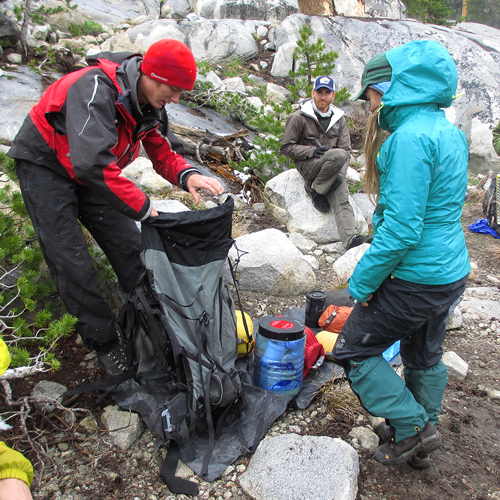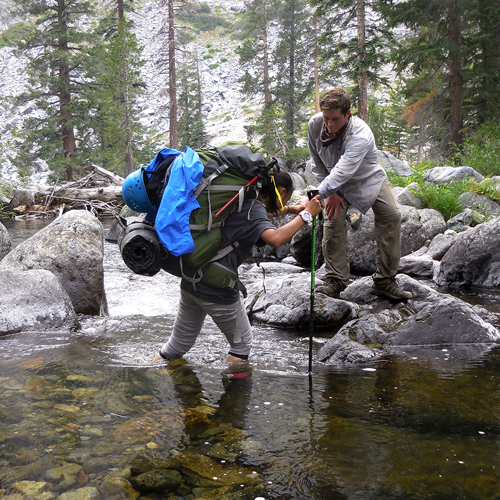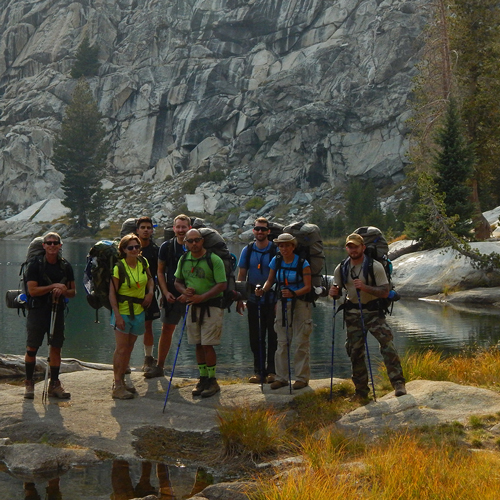My first backpacking trip was memorable, but not for reasons I like to share. The summer after I graduated from high school, two friends and I borrowed packs and sleeping bags. We carried a small pot, a can of Sterno fuel, some semblance of a map and a true sense of adventure.
Unfortunately we didn’t have a clue what we were doing. Fortunately, we survived.
I laugh now at the mistakes we made, like camping within feet of the only water source in the area during a dry August, resulting in a visit by many critters and very little sleep on our part. We chose to take a “short cut” through the forest; why would you go the long way around a loop when you could cut it off in the middle? Ending up on the side of a mountain with huge boulders to navigate, we realized there was a reason the trail didn’t go there. We also spent a lot of time wondering why we were carrying half of the items in our packs.
Later on I sought out an outdoor club and learned the fundamentals from people who knew what they were doing. I gradually built up skills and confidence, and eventually became an Outward Bound Instructor. Backpacking became a life-long love, and a way to see amazingly beautiful landscapes that you can’t access any other way.
Backpacking is one of the main activities on many Outward Bound courses. Whether you hike the Appalachians or the mountains of Colorado, you’ll learn all the basics of backpacking, and you’ll soon feel right at home, like a turtle, with everything thing you need on your back.

If you are thinking of going out backpacking, we’ve provided some guidance below so you don’t have to learn the hard way.
Plan Ahead to Maximize Enjoyment
Plan your route. Be conservative about what mileage you might cover at first, as you’ll find with a pack you’ll be much slower than on a day hike with a little weight on your back. Consider 5-10 miles a day as a good starting goal. You may be fine doing more, especially on long summer days, but this will get you going and hopefully allow time to enjoy the trip. It’s no fun to start out with a forced march, trying to reach camp before dark.
Study the map to see what your natural highlights might be. Will you pass near a mountain lake? A section of stream or river? Will you go over a peak, or have vistas along the way? Plan in time to enjoy special places or a nice spot along the trail.
Tip: Note the elevation gain on your planned route. For every 1000 feet you climb, plan on adding an extra hour of hiking time as a rule of thumb.
Have in mind a few possible camp sites. If you make good time, where will you camp? If you are slower than you think, where might you stay? Be sure and camp near water if at all possible, so you don’t have to carry it!
Carrying a pack is hard work. Get in shape before you go out, and break in your boots to prevent serious blister action.
Pack Your Pack with Care
When you sign up for Outward Bound, there’s no need to purchase gear; it is provided on your course. You will need to get the clothing and footwear appropriate for your course, along with personal items, like toiletries and a journal. Your course advisor will send you a list of everything to bring.
Packing a backpack requires some experimentation. As a general rule, put heavy items on the bottom. This tactic helps with comfort, as the weight will be more on your hips. Put some muscle into your packing: squish the sleeping bag and other soft items together, pushing air out. If your insulating sleeping pad is large, it can be attached to the outside of the pack with straps. If it’s fragile (i.e. inflatable), keep it protected in the pack. You don’t want a thorn you encounter in the wilderness to render your pad unusable.

Use either a pack liner – such as a heavy duty garbage or leaf bag – or a nylon pack cover in case of rain. Put the plastic bag in first, then your sleeping bag, cook kit and fuel, and finally your food bag.
Tip: Keep items you’re likely to need during the day in pockets or on top: snacks, water, water purification, sun screen, rain gear, warm layers, map and compass. This way you won’t be emptying your pack every time you need something.
On the Trail
Take regular breaks. This gives your body a chance to adjust to the hard work of carrying extra weight.
Drink plenty of water and regularly throughout the day. A rule of thumb is to drink two quarts of water throughout the day. You may need more than two quarts, depending on how hard you are working and what kind of environment you are hiking in.
Eat regular snacks. Backpacking is not the time to go on a diet! Keep snacks handy and nibble at breaks. Reach for the crackers and cheese, or salami and bread. Put peanut butter on a bagel. Enjoy some dried fruit, like figs, dates, apricots, raisins, etc.
Tip: Stop and care for your feet when you start to feel a “hot spot” where boots and skin are rubbing. Cover it with adhesive tape or moleskin to act as a second skin. This will often prevent a blister from forming.
Safe Crossing
When backpacking, you will often need to cross streams when following trails. Look upstream and downstream to see if someone before you has placed stepping stones, or if there is a sturdy tree that offers a safe bridge. Wide spots in a stream are shallower than narrow ones, so if you’re doing a wet crossing, seek a place that is wide and where there’s not a dangerous drop downstream.
Use a sturdy stick or hiking pole as a third point of contact to help stabilize you as you cross. With a buddy, or even two, you can hold arms to support each other. Only one person should move a foot at a time. This way you maximize your stability on slippery creek bottoms.

Tip: Unbuckle your hip belt when you cross a stream. That way if you slip, you can easily get out from under the weight of your pack and recover.
Clothing
There is one word that sums up the clothing philosophy for backpacking: layers. Wear a soft thin layer, called a…




